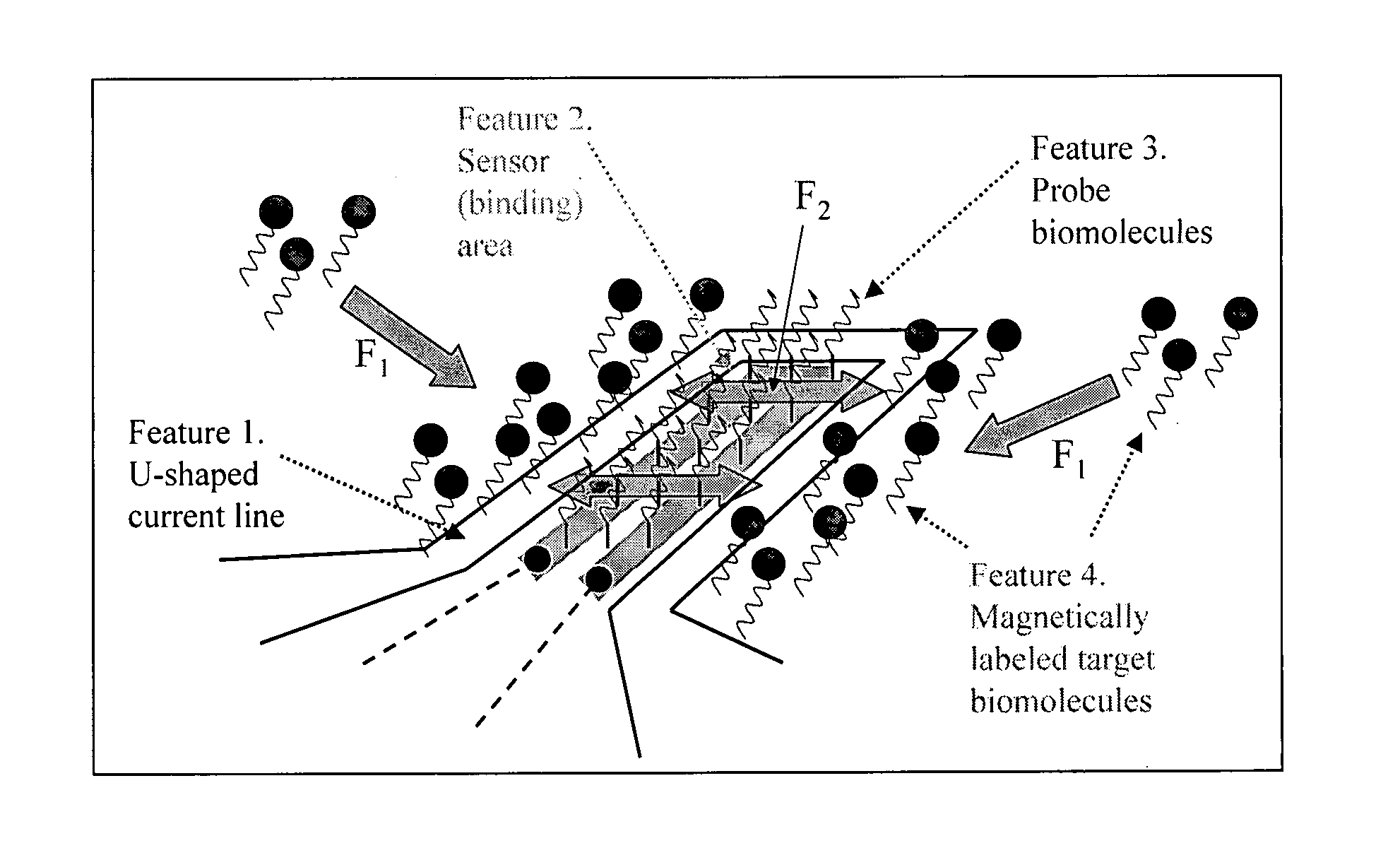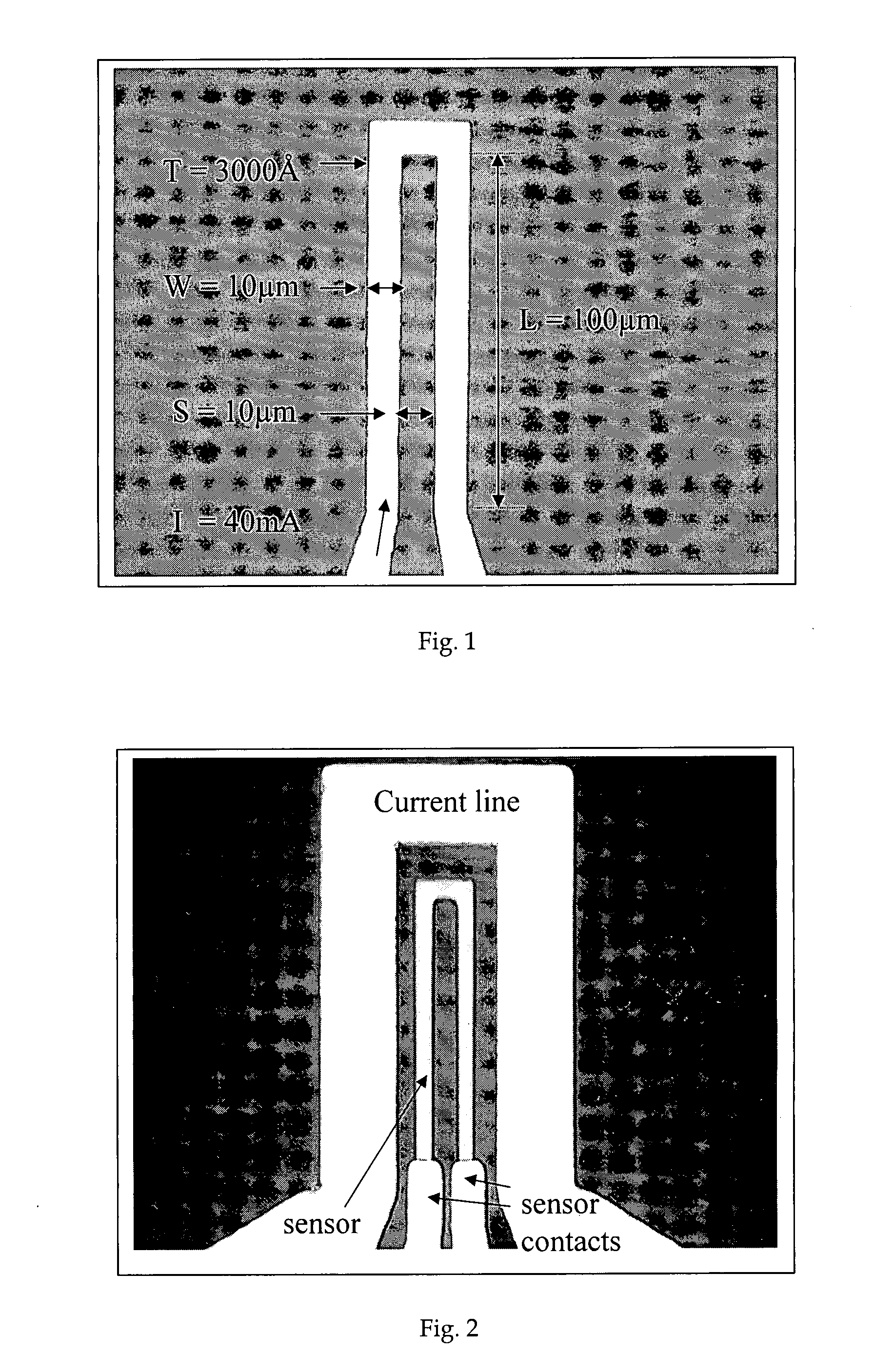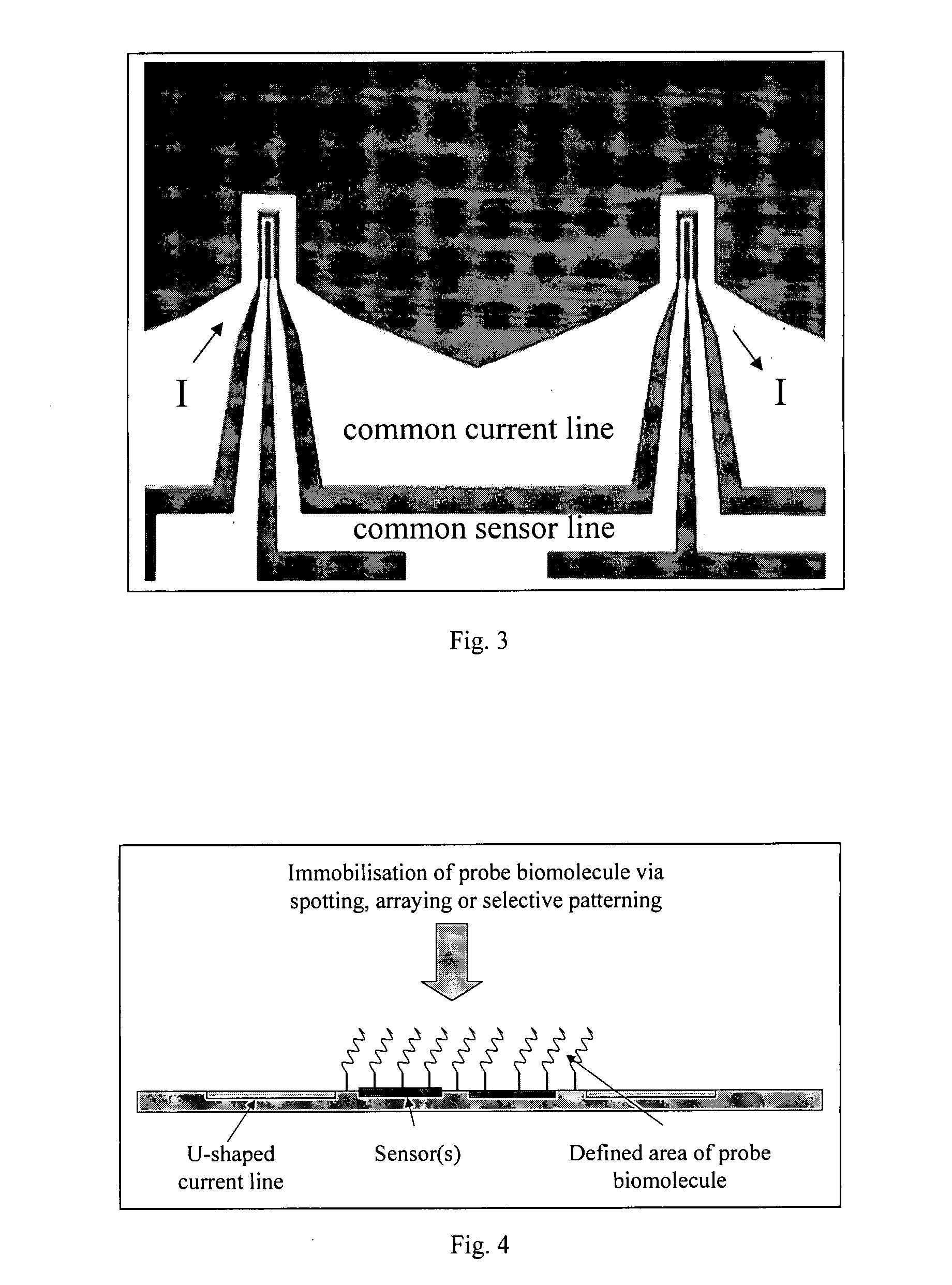Bio-Electronic Device
a biomolecule and electronic device technology, applied in the field of biomolecule detection, can solve the problems of low control over the molecular recognition (sensing) conditions and relatively slow process, and achieve the effect of enabling frequency modulated biomolecular interaction control
- Summary
- Abstract
- Description
- Claims
- Application Information
AI Technical Summary
Benefits of technology
Problems solved by technology
Method used
Image
Examples
examples
[0056] A sensor-free chip was fabricated with U-shaped current lines to demonstrate the “proof of principle” of the device using DNA-DNA hybridisation (i.e. the binding of a DNA probe with a complementary magnetically labelled DNA target) as a model for the use of the invention to (i) perform a rapid DNA hybridisation experiment and (ii) effect a frequency manipulated biomolecular recognition process.
Chip and Probe Preparation
[0057] The on-chip U-shaped current line structures were fabricated with dimensions (FIG. 1) 100 μm long, 10 μm wide and 3000 Å thick with a space between the arms of the U-shaped line of 10 μm and passivated (covered) with a layer of silicon dioxide of 2000 Å. Probe DNA molecules (50mer oligonucleotides corresponding to a specific sequence in the cystic fibrosis transmembrane regulator (CFTR) gene, where the most common cystic fibrosis mutation delF508 occurs) were immobilised across the full chip surface. The chip was placed within the electronic set-up (a...
PUM
 Login to View More
Login to View More Abstract
Description
Claims
Application Information
 Login to View More
Login to View More - R&D
- Intellectual Property
- Life Sciences
- Materials
- Tech Scout
- Unparalleled Data Quality
- Higher Quality Content
- 60% Fewer Hallucinations
Browse by: Latest US Patents, China's latest patents, Technical Efficacy Thesaurus, Application Domain, Technology Topic, Popular Technical Reports.
© 2025 PatSnap. All rights reserved.Legal|Privacy policy|Modern Slavery Act Transparency Statement|Sitemap|About US| Contact US: help@patsnap.com



